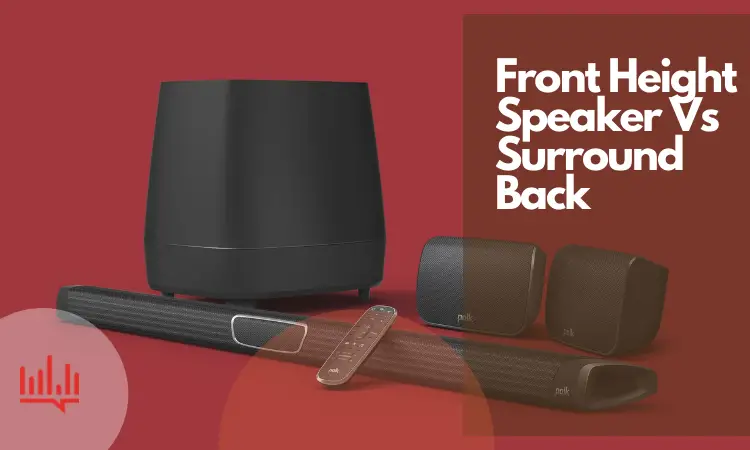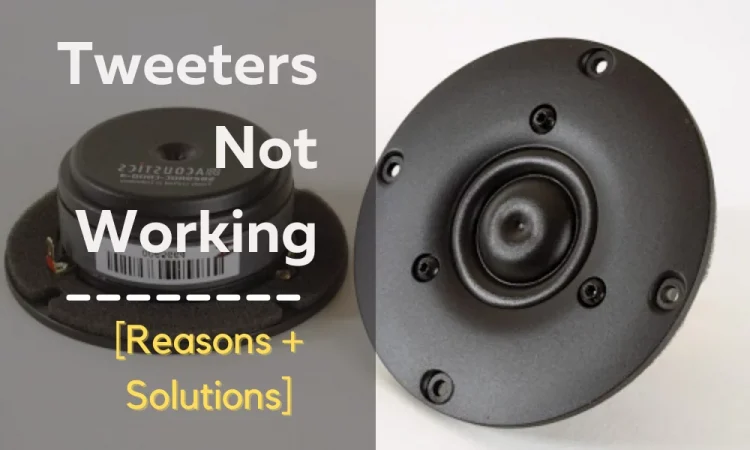Introduction
So you’re thinking of setting up your home theatre system. And you’ve got some existing speakers that are of 6 and 8 ohms.
Now you’re wondering, can you mix 6 ohm and 8 ohm speakers?
Yes, you can mix 6 ohm and 8 ohm speakers. For that, firstly check the receiver. See if it has the option to set the ohms to 6 or 8. Next, scan the amplifier specs to detect the ratings. It will even pump out better power at lower ohms ratings. Perhaps down to 4 or even 2 ohms.
Still confused? Well, we got you! We have answered all of your possible queries in this article. Plus, included everything you should know.
Keep reading to find out!
Is It Possible to Mix Speakers of Different Impedance?
Yes, there should not be any problems intermixing speakers that are of different impedance or ohm. Whether it’s a DIY or a store-bought speaker, it won’t be any issue.
You may only get into problems when intermixing broad variations. Such as 4 ohm and 16 ohm.
The ohm rating of any speaker interprets its capacity. That means, how much energy it brings from any amp to a powered speaker.
Speakers with 16 ohm tend to be the most efficient ones. Some expensive high-end speakers usually rate 4 ohm and need huge amps to sound good.
Speaker impedance differs greatly with frequency. Hence, even 8 ohm speakers may plunge sufficiently below that. Moreover, most receivers usually are manufactured adequately enough to handle this.
The amplifier can run a little warmer when you are using 6 ohm speakers. However, it should include thermal as well as overcurrent overload circuitry.
What Are the Differences Between a 6 ohm And 8 ohm Speaker?
This is the question that needs to be sorted out first. Because the knowledge of what both of them are and what differs them is essential. So you know what you’re dealing with before diving into the process of mixing them.
Let’s say your audio system is 6 ohm. It is best for you to use speakers that have a lesser impedance. Well, of course, you may use a speaker with 8 ohm. But it may induce the system to become underpowered. Thus inflicting distortion as well as other difficulties.
To put it simply, a 8 ohm speaker can deliver a more effortless load for speakers. That is compared to a speaker with 6 ohm rating.
Source: wooferguy
The more power that the receiver delivers, the better it will make.
First, a speaker with a rating of 8 ohm can draw extra power from the receiver. More than any 6 ohm speaker. This means if you’re wielding a 8 ohm speaker, it has a low-powered receiver. Then you can possibly encounter distortion or various other issues.
Usually, it is for the best that you match the impedance of those speakers. Plus, the receiver whenever feasible. Any speaker rated 8 ohm needs 109 watts. And the ones with 6 ohm speakers need 145 watts.
Mixing 6 ohm and 8 ohm Speakers
We have already mentioned that it is fine to mix speakers with varied impedance ratings. That is only when the power rating of your speaker is within 20% or even less.
For instance, you will use a 4-ohm speaker and mix it with 8-ohm ones. That is so long as both of them are a minimum of 10 watts remaining in the power rating.
Let us elaborate. It implies that a speaker with 100 watts 6 ohms should be alright. So does a speaker with 70 watts 8 ohm. Employing different speakers may defect your equipment.
Hence, if you are getting on to combining impedance ratings. It is for the best that you don’t stray away from the levels that are recommended. Keep the power levels around the similar for a specific setup. Just don’t stray away too far. For instance, 4 ohm amp with 16 ohm speakers.
However, if you wish to be absolutely sure, you may determine ohm rating using Ohm’s law. As per Ohm’s law, a receiver rating with 100 watts at 8 ohms.
It can predict to transmit 3.54A. So maintain the current no bigger than 3.54A amperage value. It is to protect the overcurrent circuit from probably tripping.
You need to reduce the volume knob a little to plummet the output energy to 75w. That 25w discrepancy is merely -1.25 dB.
That is hardly apparent due to how we distinguish sound logarithmically. But so long as you’re not cranking this entire tilt for lengthy periods. You are good to go.
If your mixer retains the recommended minimum load that is 4 ohm, corresponding a 6 ohm and a 8 ohm speaker is possible.
Mix an inconsequential 6 ohm speaker in correspondence with any nominal 8 ohm speaker. It will produce a total nominal impedance of 3.4 ohm. This is just 0.6 ohm below that amplifier’s suggested minimum size impedance of the 4 ohm.
But this shouldn’t be a problem. You can use 4 ohm impedance mixers/amplifiers. Here’s our recommendation for those.
| Image | Product | Details | Where To Get |
|---|---|---|---|
 | Dayton Audio DA240R | Has 4-16 ohm compatibility | Check Price |
 | Monoprice Commercial Audio 120W | 100/75 v compatibility | Check Price |
 | Crown XLi800 Two-channel | Forced air cooling technology | Check Price |
People also mix 4 ohm speakers to get different impedance levels.
Some Caution and ‘Head Unit’s Rules’ of Protection
After mixing the different impedances, do you notice things starting to sound unsymmetrical or maybe odd? Then you need to turn it down.
Also, If you are always turning it up to 11, then you are going to break something.
However, the amp or the speaker power ratings hardly matter. So no need to bother “matching” amp and your speaker power.
This is because the specifications of the speaker tend to be 92% useless. Also, Specs for amps tend not to be comprehensive. As they’re estimated into resistors for practical reasons. Also, the speakers are never resistors at all.
So, if you, at once, operate both the 6 and 8 ohm speakers. Plus, turn the volume up. This can drain the amp. So you need to monitor and look if the amp becomes hot.
6 or 8 ohm etc amp settings normally lessen the absolute output voltage. This way, it lessens the absolute output current, accordingly lessening the output power.
FAQs
Can I use 3ohm speakers on a 6ohm amp?
Yes. You can use a 3 ohm speaker on a 6 ohm speaker. But the speaker might not work as fine as it should or as efficiently. This is due to the impedance difference.
What happens if speaker impedance (ohms) is too low?
If the speaker impedance is too low, you may risk deteriorating the amp. So, when you connect the amplifier to the inappropriate speaker impedance, this happens. Too low impedance can result in unstable output as well as poor tone.
How can I increase speaker impedance?
To increase speaker impedance, connect a resistor that has the exact resistance (Ohms). Next, calculate the minimum of 1/2 the rated power of your amp’s power output rating. And with it secure any unprotected resistor leads. As a result, those can not be short to metal or any speaker wire.
Wrapping Up
Hope we have cleared your question of can you mix 6 ohm and 8 ohm speakers?
Now you know that you can mix those impedances and customise as you prefer. However, running 6 and 8 ohm together will seizing life expectancy from the receiver. So, keep that in mind.
That is all for now. Have a good day!



